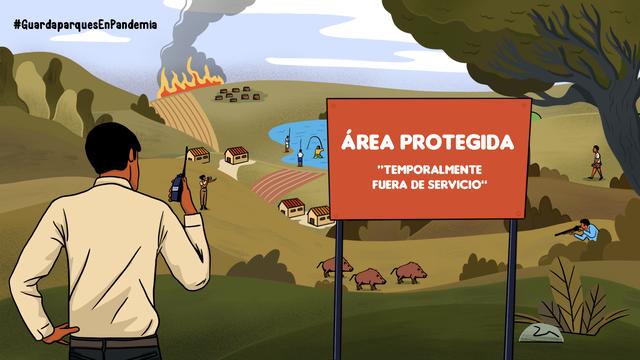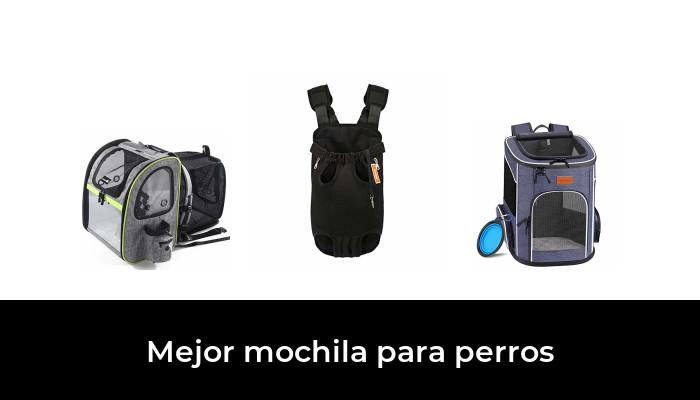Park rangers at risk: protecting nature with life
One night, in the late 1990s, armed men arrived at the El Cisne cabin, the place where officials from the Los Nevados National Natural Park were staying, knocked on the door and asked in a threatening tone by Gabriel Echeverry, a park ranger. The day before, members of the United Self-Defense Forces of Colombia (AUC) had been merciless shooting trout in the Otún lagoon, located in the section of the park where Echeverry worked. Several members killed them with their rifles. They attacked them almost showing off, in the presence of their relatives. Echeverry came over to tell them to leave the fish alone. They did not like the claim. At night, in the El Cisne cabin, the other park rangers told the paramilitaries that Echeverry was not there. He had left in the morning for his home in Lebanon, Tolima, to rest for a couple of days. Just in case, the paramilitaries went to look for him in another cabin, called Brisas, and they didn't find him there either. When Echeverry returned from his days off, his boss ordered him to get on a flight to La Guajira with whatever was on hand. He arrived at the Los Flamencos Fauna and Flora Sanctuary, in the Colombian Caribbean. There he spent a year without leaving the reserve. A year without seeing his family.
In the Los Flamencos Fauna and Flora Sanctuary, in La Guajira, Gabriel was unable to leave for a year due to threats from armed groups in the place where he previously worked. Photo by Mariana Guerrero.
Mariana GuerreroIt was not the first time she feared for her life. A few years ago, when he worked in the Los Katíos National Natural Park, in Chocó, he was intimidated by the then Farc-EP guerrilla . In the early 1990s, the AUC also reached that territory. According to Echeverry, both groups financed their operation with the wood they extracted from the park. The seizures that he had to make at work led to threats to kill him. His companions in Los Katíos had to leave little by little. “They weren't playing,” says Echeverry, who retired as a park ranger three years ago. They ordered to kill." In the end, the park was abandoned for a while. Later, the government transferred Echeverry to the Utría National Natural Park, also in Chocó. It lasted only 15 days. At that time, the locals did not like his conservation duties and one day he found a note under his door in which they gave him a few days to leave the place.
Gabriel Echeverry was moved from at least four parks due to threats from armed groups. So far this year, four park rangers have been declared a military objective by these actors. Photo by Mariana Guerrero.
Mariana Guerrero“Threats are the landscape for us park rangers,” says Carlos Alberto Aguilar, president of the National Union of Workers of National Natural Parks of Colombia (Sintraparques). Fear and uncertainty continue to be the protagonists of the daily lives of these officials, according to him. In many cases, fear becomes paralyzing, silence takes the lead and several of the threats go unreported to prevent them from becoming facts. "Only armed with our courage and the conservation shirt is that we face the people who are committing infractions”, says Aguilar. During 2021, four threats were reported against these officials: a pamphlet with a death sentence in La Macarena, in Meta; a third party warning in Tuparro, Vichada; an extortion and declaration of a military objective in Munchique, Cauca, and a direct threat at his residence in La Paya, Putumayo. All the intimidations were born from the exercise of environmental authority, according to National Natural Parks.
“They took us out of the parks, they threatened us, they threw us out of many places that ended up being left alone”
Member of the Colombian park ranger collective.
TimeIn these cases, the protocol is to report what happened to their superiors and start a process with the corresponding authorities. Depending on the magnitude of the threat, the official is relocated or guarantees are sought through the National Protection Unit (UNP). However, the five park rangers interviewed for this story ensure that the transfers depend on the disposition of their bosses and the protection schemes of an evaluation process of the institution that are rarely assigned. “When the interests are different from conservation, and much larger, they require more drastic measures and that is when the park ranger's objective has no echo and we are left alone,” says Aguilar. Although the authorities are with us at the time of the offence, when the storm passes we return and we are left alone in the place”. According to the park rangers, there are conflicts in all 59 protected areas. "There is always an infraction, there are always interests that are committed behind these infractions against the environment," says Echeverry.
Park rangers at risk
El TiempoThroughout his career, Gabriel Echeverry worked in more than 12 natural parks in the country. He knows El Tuparro, in Vichada; Iguaque, in Boyacá; Tamá and Los Estoraques, in Norte de Santander; La Paya, in Putumayo, and half a dozen others. He dedicated 40 years of his life to these reserves, as confirmed by a plaque in the living room of his house that the institution gave him. He had to be moved from four of these areas due to public order problems. For him, being a park ranger became dangerous when other interests, of an economic nature, began to direct their gaze towards the resources of the natural parks. Currently, they face not only the problem that Echeverry talks about, but a long list more that complicates the work of park rangers. According to the most recent report by Parques Cómo Vamos, a group of ten NGOs that generate information to guarantee the persistence of the country's protected areas, today national parks have two main problems: deforestation and crops for use unlawful. Added to these are the presence of illegal mining, poachers, forest fires, garbage dumping, illegal tourism and expansion of the agricultural frontier. For National Natural Parks, other challenges are linked to development projects that "generate significant risks depending on their proximity to protected areas." "Who is left in the middle of these problems?" asked a park ranger in the Andean zone, who asked not to be named for security reasons. "We," he replied with a hint of indignation. These officials are the ones who intercede with the actors who seek to extract resources from the parks. They can be peasant communities or tourists, but also armed and criminal groups. “We became enemies for them,” said Adriana Pinilla, an official at the institution and a member of the Colombian Park Rangers Association. For them, we are holding back their possibilities of entry”. The institution has called it "public risk" and recognizes, among the different challenges, threats, kidnapping, extortion, theft, displacement and antipersonnel mines. These harassments have not only remained in words, messages or intentions: several of the threats have materialized in murders. According to National Parks, between 1986 and 2021, 17 park rangers were killed. In 2020, Colombia was the country with the most murders of environmental leaders in the world, including park rangers, according to the NGO Global Witness.
“They weren't playing. They ordered to kill"

Gabriel Echeverry, retired park ranger. Side effects
El TiempoA mere five meters away was the feline. An animal that supposedly no longer inhabited that area of the country. It was a puma walking in the middle of the frailejones and the paralyzing cold of the Los Nevados Natural Park. Gabriel Echeverry had him in front and ready his camera so that evidence of the rare, not to say exceptional, moment would remain. The cougar stared into his eyes and growled. Echeverry took the first photograph of him. “I was moving carefully so as not to alarm him,” he said. Then he was speechless when describing what he felt at that moment. He doesn't know if it was fear, joy or simple adrenaline. He managed to take another five photos and his camera discharged. The cat did not attack him. He went his way and the park ranger followed his. When he was out of sight he wanted to run, but it was such a steep mountain that only an hour later he reached the cabin where his companions were staying. “You bitch! Look, look, what I saw," he said as he showed them the photo of the puma. The others told him: "Walk, walk, we are looking for you." No one had seen a cat like this in the park. Not even Echeverry, who had been in protected areas for 36 years.
Gabriel Echeverry managed to see a puma from less than six meters away while taking a tour of the Los Nevados National Natural Park, in the Tolima area.
Mariana Guerrero. EL TIEMPOEcheverry the parks left him the greatest joys of his life. he has stories about all the reserves. The day he saw the whales in Chocó, when he approached the flamingos in La Guajira, the first time he saw snow on the snow-capped mountains. In many of these cases tears of emotion came out. In 1978, Echeverry came across a job as a park ranger by chance. He was 18 years old, had finished his military service and could not find a job in Líbano, Tolima, the municipality where he was born. A cousin of his had resigned from his job at the National Institute of Renewable Natural Resources and the Environment (Inderena), which later became the Ministry of Environment and Sustainable Development. The vacancy became available in the Iguaque páramo, in Boyacá, and Gabriel decided to take it, believing that it was about planting trees and taking care of some forest areas. “At that time, little was known about the national parks,” he told me. He does not regret having been a park ranger despite the threats and risks he experienced. Not even tinnitus, a condition characterized by an incessant, maddening ringing in the ear, makes him reconsider his past. According to some doctors, the tinnitus may have been caused by the changes in altitude, he says. Perhaps it was the result of constantly descending from Los Nevados Natural Park, which reaches 5,300 meters above sea level, to Líbano, which is around 1,500 meters.
In the Los Nevados National Natural Park, Echeverry worked for about 20 years as a park ranger. Photo by Gabriel Echeverry.
Private fileEcheverry came to take daily walks of between eight and ten hours for five days in a row. He had to accompany groups of tourists or tour the area in his charge, in Aguacerales. Although the routine varied depending on the park, he had to get up early to send the report to the Colombian Geological Service to control the activity of an active volcano in the area. The walks to monitor irregularities such as fires, the presence of tourists off the trail or other potential environmental problems began there. On a quiet day, he did not make seizures or mediate conflicts with armed groups or extractive companies. On an exceptional day, he had to report a fire, call a fire brigade, try to put out the raging flames, or move hundreds of head of cattle that he had confiscated. He had to keep a minute about eventualities in the park, help keep protected areas free of litter, and, in some cases, stay in a tent if the tour ended far from his cabin. They were days without entry or exit times.
In the Los Nevados National Natural Park, several park rangers have been threatened. Among the biggest challenges is livestock.
Mariana Guerrero. EL TIEMPOThe Nevados National Park preserves three of the six glaciers in the country. Before there were 13, but climate change caused their disappearance.
Mariana Guerrero. THE WEATHERLos Nevados Park can reach peaks of up to 5300 meters above sea level.
Mariana Guerrero. EL TIEMPOThe surface of this park covers three departments: Tolima, Caldas and Quindío.
Mariana Guerrero. WEATHERThis park is home to the Espeletia hartwegiana, a species of frailejón unique in the country. Its biodiversity is one of its great riches.
Mariana Guerrero. EL TIEMPOMany of your colleagues today have knee problems from the journeys they take at work; others have skin diseases, according to Fredy Ramírez, the park ranger (National Parks recognizes that different park conditions can negatively impact the health of their workers). In 2019, a survey carried out by the World Wide Fund for Nature (WWF) found that park rangers in Latin America claim to have little institutional support on health issues. Insurance plans do not compensate them in case of serious injuries at work, according to 54.7% of respondents, and there is no support in case of death during their tenure, according to the 67.7%. Guardians risk their lives, but few people understand or recognize their work. According to the NGO Global Witness, they are environmental defenders who are on the front line of the fight, since they are in charge of the conservation and protection of natural reserves.
Park rangers exist in most countries in the world. As in Colombia, there are many who face threats, violence and death. In Congo, for example, more than 100 park rangers tasked with caring for gorillas in Virunga National Park have been killed. It is partly due to situations like the above, that WWF has highlighted them as the "fundamental link" for the preservation of the world's natural resources. “Without park rangers, there are no parks”, says one of the members of the group of officials. Today, the working conditions of park rangers in Colombia seem to be one of the most important challenges for these officials. The problem, however, comes from behind. Echeverry had to pay his own money for lodging and transportation in various places where he had to stay because he finished the tours in the protected areas very late; he lived three hours from the park, but transportation was never recognized for him. And his case is by no means unique. Currently, park rangers do not have the support to reach the reserves by land, which can be difficult to access. Sometimes support is not even offered for those who are entering by sea, says Adriana Pinilla.
Echeverry retired from natural parks three years ago, after serving 40 years as a guardian of the country's protected areas.
Private archive“We are not enough,” says Aguilar. There are many hectares that are left without conservation actions.” Nearly 610 park rangers are in charge today of taking care of the more than 17,465,359 hectares that make up the National Natural Parks. According to the institution, the international average regarding the number of hectares to be conserved is 6,250 per official. In Colombia, there are 34,000 for each park ranger. This means that each one must take care of an area equivalent to the surface of a city like Medellín. It is as if there was a single police officer or authority in charge of the entire capital of Antioquia. But the problem goes much further. In some cases, park rangers are the only institutional presence in certain areas of the country. In places like the Nukak National Natural Reserve or the Los Katíos National Natural Park, the nearest authorities may be more than 50 kilometers away.
Los park rangers do not have a good infrastructure in their accommodation, according to Adriana Pinilla. Their workspaces aren't always adequate, she said. In several cases, they do not have basic sanitation in the places where they stay and many of the expenses are on their own, even when it comes to staffing issues. Although Parques Nacionales Naturales offers equipment depending on the worker's area, park rangers report that they are not adequate for the tasks they perform. A raincoat is no longer enough for a park with perpetual snow or torrential rain. Some rubber boots are not suitable for mountain walks, among other shortcomings, says Aguilar. “It is difficult to say that we have the optimal, necessary and essential elements to develop our activity”, adds Pinilla.
Saying 'goodbye' to family
El TiempoIn the mid-1990s, Echeverry went down the Atrato River from the Los Katíos National Natural Park in a small canoe with his daughter Johana. "Dad, look at that kitten," the girl told him as she pointed to a jaguar that was on the shore. He looked at them as they passed, and they at him. Very cautiously, the cat ran away and entered the humid Chocó forest. For a long time he was able to live with his family, his wife Leticia and his daughter, within the parks where he worked. When Johana began to grow, she had to stay in Lebanon while she studied and they saw little. Leticia was a guide in the same place and visited her on weekends. For Echeverry, the biggest sacrifice of being a park ranger was family. "I used to see my daughter when she was little and, when I came, she was already a young lady," she says. One day, she complained to him for not spending time together. Most of the time they shared it in the parks, when she was on vacation and visited him. But that ended around ten years ago when, with changes in administration, they prohibited the entry of families to the places of residence of officials. sometimes a month or a month and a half in the parks,” says Adriana Pinilla. This implies being separated from children, wife and parents for long periods. It's a very high sacrifice." Carlos Aguilar agrees: “The vast majority of the families of park rangers in Colombia are dysfunctional families, they are marriages that do not see each other. We have many separated families and divorces. That is because we are in very complex areas and we do not have that family unit”. In Gabriel's home it seems that the sacrifice was worth it for everyone. Everything revolves around the parks. At his home in Lebanon, some pictures of illustrations of animals and plants make up the main hallway that leads to a picturesque colonial-looking building. He built it inspired by the traditional buildings of Villa de Leyva, where he worked for the first time as a park ranger.
Gabriel Echeverry was able to share with his family in the parks until the rules changed. Remoteness from home is one of the biggest challenges for park rangers today.
Private ArchiveIf his life was marked by reservations, so was that of his family. His wife currently works as a guide in the Los Nevados Natural Park. His daughter, now married with a child, is a biologist and works for the institution. His other son, Andrés Felipe, is an operator in the Los Katíos National Natural Park, where his father was displaced some time ago. In the living room of his house, a series of paintings with photos of the parks that his wife and he visited together frame the place. The crockery has the word “Fomparques” inscribed on it. On a small wall, the painting stands out with the photos of the puma and the logo of National Natural Parks. Although he remembers his days in the protected areas, Echeverry is also aware of the reasons that made him withdraw. He resigned on October 9, 2018. He was 60 years old at the time. The parks had given her the best days of her life, but they had also taken a lot out of it. In many cases, these civil servants stay by vocation. They call it 'the mystique of the park ranger'. One morning in September 2021, I asked Echeverry if he regretted having been a park ranger. "Never!" answered. You cannot imagine a different life. He is 63 years old and more than half of his life was spent in the country's nature reserves. “They left me very happy. An immense joy," he says. In a large box he keeps hundreds of photos of those places that marked him. Among the photographs of animals, plants and landscapes are kept the memories of those areas where he was displaced and intimidated. Those from which several of his companions did not manage to flee. *The names were changed for the safety of the interviewees. This investigation is part of the journalistic special 'Historias en clave verde. Second edition', carried out within the framework of the training and production project 'CdR/Lab Periodismo en clave verde' of the Editorial Board (CdR), thanks to the support of the Deutsche Welle Akademie (DW) and the German Cooperation Agency.
More to see
2022/01/21Reports2022/01/20Murderers2021/12/30TIME
2021/12/30TIME
Covid-!9
Covid-19 in Colombia: 247 deaths and 16,119 new cases registered
Horoscope
Find all the zodiac signs here . We have advice on love, finances and much more for you.
Crossword Puzzle
Test your knowledge with the EL TIEMPO crossword puzzle

![47 best antiage nutritive cream in 2022 [based on 326 reviews]](https://website-google-hk.oss-cn-hongkong.aliyuncs.com/drawing/article_results_6/2022/2/27/1918fc37c66ad30564173e69d9df88a0.jpeg)








